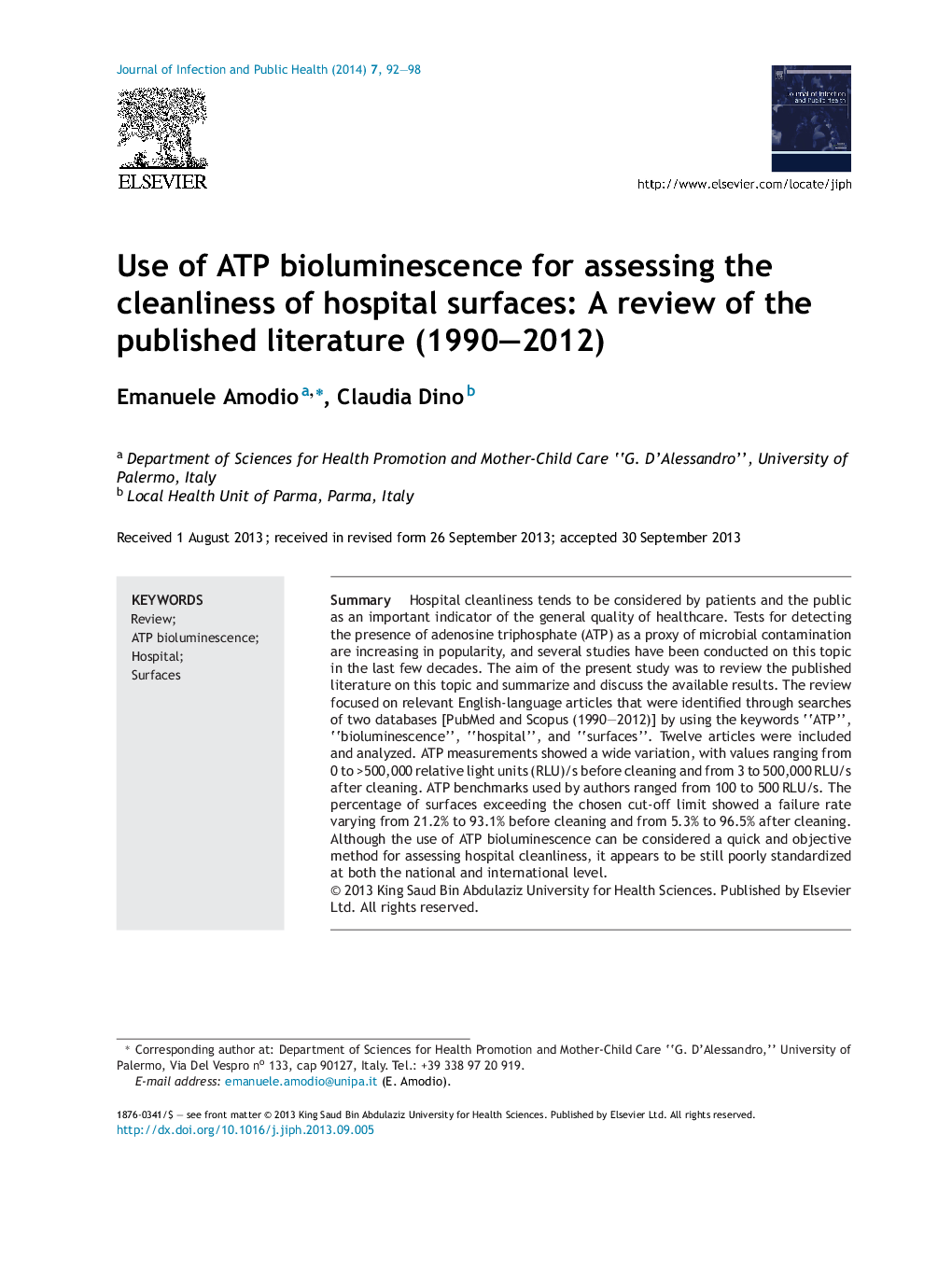| Article ID | Journal | Published Year | Pages | File Type |
|---|---|---|---|---|
| 3406265 | Journal of Infection and Public Health | 2014 | 7 Pages |
SummaryHospital cleanliness tends to be considered by patients and the public as an important indicator of the general quality of healthcare. Tests for detecting the presence of adenosine triphosphate (ATP) as a proxy of microbial contamination are increasing in popularity, and several studies have been conducted on this topic in the last few decades. The aim of the present study was to review the published literature on this topic and summarize and discuss the available results. The review focused on relevant English-language articles that were identified through searches of two databases [PubMed and Scopus (1990–2012)] by using the keywords “ATP”, “bioluminescence”, “hospital”, and “surfaces”. Twelve articles were included and analyzed. ATP measurements showed a wide variation, with values ranging from 0 to >500,000 relative light units (RLU)/s before cleaning and from 3 to 500,000 RLU/s after cleaning. ATP benchmarks used by authors ranged from 100 to 500 RLU/s. The percentage of surfaces exceeding the chosen cut-off limit showed a failure rate varying from 21.2% to 93.1% before cleaning and from 5.3% to 96.5% after cleaning. Although the use of ATP bioluminescence can be considered a quick and objective method for assessing hospital cleanliness, it appears to be still poorly standardized at both the national and international level.
